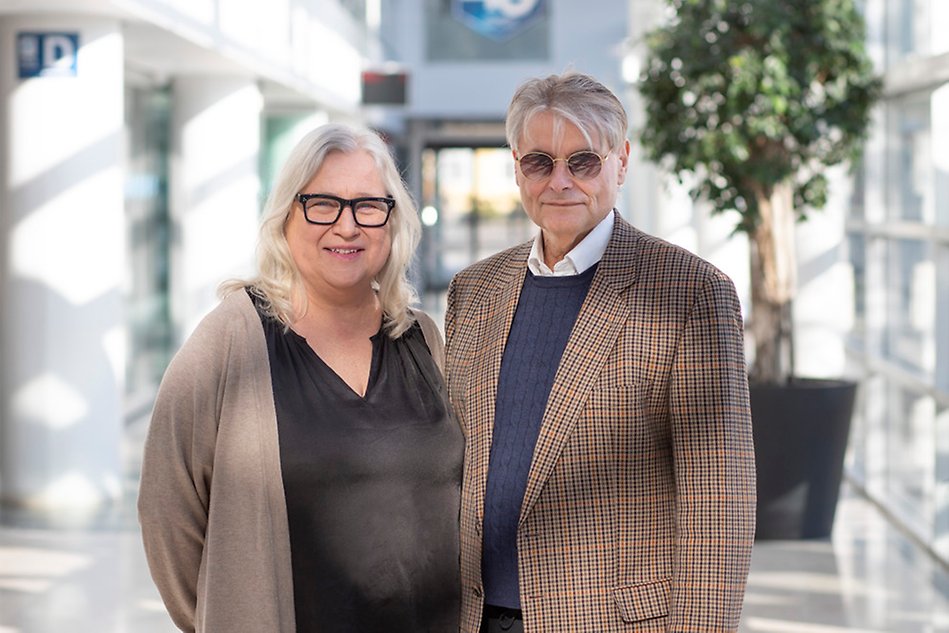Researchers see risks with robot colleagues: “act sensibly”
What happens to the work environment when a robot is introduced as a new colleague? How can digital automation contribute to good bureaucracy? These are questions that researchers at Halmstad University have sought to answer when they followed Halmstad Municipality's work on introducing “robot colleagues”.

Photo: iStock
“Automation can be great, but it can also be wrong."
Michel Thomsen, Senior Lecturer in Informatics
When Halmstad Municipality decided to introduce Robotic Process Automation (RPA), researchers at Halmstad University and the University of Gothenburg were given the opportunity to conduct a case study on the implementation. By sitting in on meetings and interviewing relevant politicians and officials, the researchers were able to follow the process from the idea stage to launch.
A fully digital employee
The aim of the research project, which ended in December 2023, was to investigate the impact of robot colleagues in the work environment. A robot colleague is a fully digital employee who can help with things like email management, data processing and searching for information.
“What we have asked ourselves is: How can you implement automation without deteriorating the work environment? How can you think about and integrate work environment issues into these processes when automating? We have also looked at how automation can contribute to good bureaucracy”, says Maria Åkesson, Professor of Informatics at Halmstad University.
The researchers’ use of the term “good bureaucracy” is partly based on the negative association many people have with the word “bureaucracy”.
“For some people, the word bureaucracy has a bad connotation. They perceive it as something inefficient and slow-moving”, says Michel Thomsen.
The researchers in the project wanted to highlight the other side of the coin: The good bureaucracy.
“It's efficient. It treats people equally when they should be treated equally, and differently when they in fact should be treated differently. This is why we chose to use the words ‘good bureaucracy’, to indicate that bureaucracy is a good thing”, says Michel Thomsen.

Maria Åkesson, Professor of Informatics, and Michel Thomsen, Senior Lecturer in Informatics.
Deeper analysis required
Whether or not RPA can contribute to good bureaucracy without negatively impacting the work environment is a complicated question. According to the researchers, the answer may differ from case to case, depending on various factors such as what is automated, why it is automated and how the new system is introduced.
“If you do this well, automation can enhance skills and help employees become better at what they do, which can give them more confidence”, says Maria Åkesson.
However, there are also instances where a robot colleague can have a negative impact on the employee's work environment.
“Let's say you have a job involving advanced assessments and investigations and are given a robot colleague to takes over some of your simpler tasks, freeing up two hours of your working day. Then there is a risk that your employer will choose to fill the freed-up time with even more specialised work. This could result in a working day consisting only of complex tasks, with no time for recovery”, says Michel Thomsen.
Something that Maria Åkesson and Michel Thomsen have noticed is that "efficiency" has become a keyword in digitalisation strategies and policy documents, which the researchers argue can be problematic. They believe that this is a narrow perspective that omits other important values, such as service quality, a good working environment, integrity and sustainability.
“It is important to conduct a deeper analysis where you are given the opportunity to think through the entire chain and look at the interaction as a whole from the perspective of different stakeholders. This is not always how it is done, and time is often scarce. There is no time or money set aside for this analysis”, says Maria Åkesson.
Cool down from the hype
In their research article, the researchers call for caution when it comes to the pressure of digitalisation in the public sector, where more and more tasks are expected to be rapidly automated and digitalised.
“You need to stay cool, or as we say “professionally sceptical”, when dealing with these issues. This means that you cool down from this hype curve that is being pushed and instead think about the actual purpose of the organisation and what it should be good at”, says Maria Åkesson.
What Maria Åkesson and Michel Thomsen mean is that it is important to keep in mind that the automation that is put in place not only affects individual employees, but also leaves its mark on the organisation as a whole. In the study, the researchers have seen incremental changes in things such as work and service, quality, division of responsibilities and work environment. For this reason, they recommend thinking carefully and critically about automation initiatives, as well as allocating sufficient resources and allowing time for learning if they are implemented.
“The point is that you should act sensibly, and always bear in mind the question: how do we do this wisely?” says Michel Thomsen.
Text: Lovisa Essunger
Photo: iStock and Dan Bergmark


